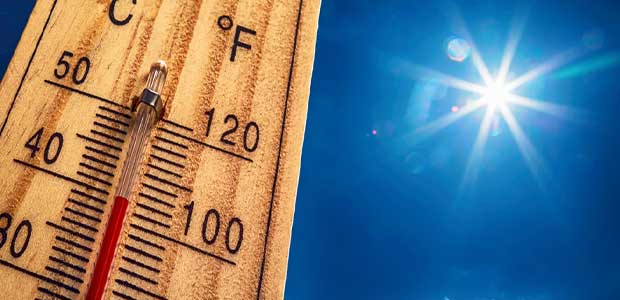In 2014, 2,630 workers suffered from heat illness and 18 died from heat stroke and related causes on the job. The numbers don’t lie – if you or your co-workers are not prepared, without a doubt; heat can kill or cause serious injuries.
Although it is often the deadly tragedies that capture our attention, there are countless less severe, yet dangerous, heat related illnesses each year across multiple industries. These sorts of extremely dangerous heat situations occur every day.

Recently, Ergodyne published a white paper loaded with useful tips to help workers across numerous industries avoid heat hazards and make it home safely at the end of their shift.
Imagine a situation like this: John, a road construction worker, is sent out to fix a pothole on a major highway on a scorching day in July. The temperature high for the day is 90 degrees with high humidity. Working around hot asphalt, John must wear protective clothing and gloves to avoid burns, which makes him even hotter and more uncomfortable. He may have a small bottle of water, but it is not on him while he is working. He will be working in the sun and high heat for at least 4 hours with no break.
Situations similar to this occur every single day. Workers, like John, are regularly exposed to extremely dangerous heat and equipment. The high risk of heat stress injuries in these situations is all too common for workers. Even though workers like John may not die because of these situations, they are still being affected by the dangers of heat stress and heat-related injuries can occur.
Even when there are no fatalities, it is important to not overlook the effects of heat stress on the job. When heat stress occurs, several safety and productivity issues arise that are cause for alarm.
Worker Injury: While working under stress, cognitive abilities decrease. This results in slower reaction time and decision making. Operating equipment or tools can be dangerous at any time, but especially dangerous when you or your co-workers are impaired.
Property Loss or Damage: Fine Motor Skills are often impaired when your body is under stress. A worker not at peak form can cause accidents and injury resulting in property loss and damage, and possibly causing harm to themselves and others.
Productivity Loss: A stressed body cannot work at optimum speed or performance. Worker productivity declines as the effects of heat stress increase.
Common Heat-Related Illnesses: Heat Related Illness or HRI and Heat Stress are umbrella terms used to categorize a variety of conditions that are the result of hot or humid environments. Being in these environments can cause heat rash, heat cramps, heat exhaustion, and heat stroke. Below you will see the most common heat-related illnesses and their symptoms to help you identify and treat them as soon as they occur.
§ Heat rash is caused by skin being constantly wet from sweat and plugged sweat glands. It appears as a tiny raised red blistery rash.
§ Heat cramps are caused by excessive loss of water and electrolytes and are an early warning sign of heat stress. These painful cramps usually occur in the legs or abdomen.
§ Heat exhaustion shows up as pale skin, excessive sweating, headache, nausea and vomiting, blurred vision, and dizziness. Sufferers may faint but usually remain conscious.
§ Heat stroke involves dry hot skin and very high body temperature. The sufferer’s skin is red and without sweat. Sufferers will also be either unconscious or incoherent.
These four heat-related illnesses are all reason to discontinue work and either get to a shady resting spot or seek medical attention. There is always time for a break while doing strenuous work in high heat circumstances. It is important to know the most common heat-related illness and how to treat them. To protect yourself and others from fatalities, it is key to pick up on early warning signs of heat stress.
Follow these tips to prevent heat-related illness:
§ Drink water every 15 minutes, even if you are not thirsty
§ Rest in the shade to cool down
§ Wear a hat and light-colored clothing
§ Learn the signs of heat illness and what to do in an emergency
§ Keep an eye on fellow workers
§ Take it easy on your first days of working in the heat, you need to get used to it
Everyone is at risk of heat stress. High heat work environments can put even the strongest worker in danger. It is important to recognize this and always take precautions even when you think the heat might not affect you. Better to be safe than sorry. There are, however, people that are at a higher risk. Those include workers who:
§ Are obese, unfit, or lack proper nutrition
§ Are over 40
§ Are new to a work site or job and not yet acclimated
§ Have heart disease or high blood pressure
§ Are on certain medications
§ Have or do drink alcohol
§ Work in certain types of heavy, insulating clothing or gear


